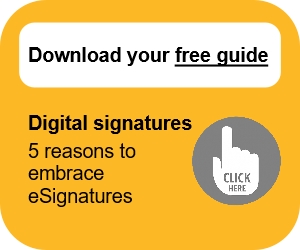E-procurement

|
'E-procurement' refers to tendering processes carried out online and through information and networking systems. It can be a highly-effective way of managing complex supply chains with multiple tiers of suppliers.
Very broadly, e-procurement might include:
- E-informing: the process of gathering and distributing procurement information both from and to internal and external parties.
- E-tendering: the process of tendering using online technology.
- E-auctioning: web-based software that allows potential suppliers to compete online, in real time, to provide prices for the goods/services under auction.
- Vendor management: an application that acts as a mechanism for business to manage and procure staffing services.
- Catalogue management: the process of suppliers enabling product content to be made available to buying organisations in order for them to procure goods electronically.
- Order status: the ability to track orders online until delivery.
- Advance ship notice: notification of pending deliveries.
- E-invoicing: exchange of the invoice document between a supplier and a buyer in an integrated electronic format.
- E-payment: the e-payment system facilitates the acceptance of electronic payment for online transactions.
E-procurement software automates procurement-related functions, procedures and processes, reducing the need for paper-based and human processes. E-procurement platforms can usually be customised according to the needs of the user, often with accessibility through smartphones and tablet devices. It frees up an organisation’s procurement teams from low-value tasks, allowing them to focus on higher-value activities such as contract negotiation.
There are several potential challenges for an organisation implementing e-procurement. These involve considerations such as the installation and integration of software with other enterprise systems, training requirements, and liaising with suppliers to ensure a successful transition to the new system. However, there are some significant benefits that can be achieved. These include:
- Lower transactional costs.
- Better reporting through automation.
- Pre-qualification questionnaires (PQQ) can be dispatched and responses automatically evaluated.
- Tender-cycle times can be reduced.
- The whole tender process can be scheduled, with milestones automatically managed and participants alerted.
- E-evaluation can appraise and give different weightings to bids automatically.
- The system can be extended to handle routine clerical procedures after contract award, such as invoicing and payments.
- There can be simpler contract management as all documents can be stored centrally.
- Because of the ease of contacting, more suppliers can be invited to tender, meaning there is greater competition.
- Integrated data solutions allow for accurate cost estimates and a source of accurate costing data in a direct feedback loop from the tender process.
- Substantial reductions can be made in paper and energy use.
- It can lead to closer, more structured communication and cooperation with supply-chain partners.
- It streamlines change management as requirements are properly documented.
- It increases accountability by formalising and documenting the tender process, and creating audit trails.
[edit] Related articles on Designing Buildings
- Automated vendor selection.
- Bidder.
- Bill of quantities software.
- Commercial management.
- Computers in construction tendering.
- Connected procurement.
- E-auction.
- Electronic auctions under the Single Procurement Document (Scotland).
- ESignatures.
- E-sourcing.
- ESPD and the decline of the PQQ.
- Invitation to tender.
- Managing the procurement process.
- Microsoft Project - software for project management.
- Procurement route.
- Reverse auction.
- RFx.
- Source to pay software S2P.
- Supply chain management.
- Supply chains in construction.
- The benefits of e-procurement in construction.
- Tender documentation.
Featured articles and news
ECA progress on Welsh Recharging Electrical Skills Charter
Working hard to make progress on the ‘asks’ of the Recharging Electrical Skills Charter at the Senedd in Wales.
A brief history from 1890s to 2020s.
CIOB and CORBON combine forces
To elevate professional standards in Nigeria’s construction industry.
Amendment to the GB Energy Bill welcomed by ECA
Move prevents nationally-owned energy company from investing in solar panels produced by modern slavery.
Gregor Harvie argues that AI is state-sanctioned theft of IP.
Heat pumps, vehicle chargers and heating appliances must be sold with smart functionality.
Experimental AI housing target help for councils
Experimental AI could help councils meet housing targets by digitising records.
New-style degrees set for reformed ARB accreditation
Following the ARB Tomorrow's Architects competency outcomes for Architects.
BSRIA Occupant Wellbeing survey BOW
Occupant satisfaction and wellbeing tool inc. physical environment, indoor facilities, functionality and accessibility.
Preserving, waterproofing and decorating buildings.
Many resources for visitors aswell as new features for members.
Using technology to empower communities
The Community data platform; capturing the DNA of a place and fostering participation, for better design.
Heat pump and wind turbine sound calculations for PDRs
MCS publish updated sound calculation standards for permitted development installations.
Homes England creates largest housing-led site in the North
Successful, 34 hectare land acquisition with the residential allocation now completed.
Scottish apprenticeship training proposals
General support although better accountability and transparency is sought.
The history of building regulations
A story of belated action in response to crisis.
Moisture, fire safety and emerging trends in living walls
How wet is your wall?
Current policy explained and newly published consultation by the UK and Welsh Governments.
British architecture 1919–39. Book review.
Conservation of listed prefabs in Moseley.
Energy industry calls for urgent reform.




























